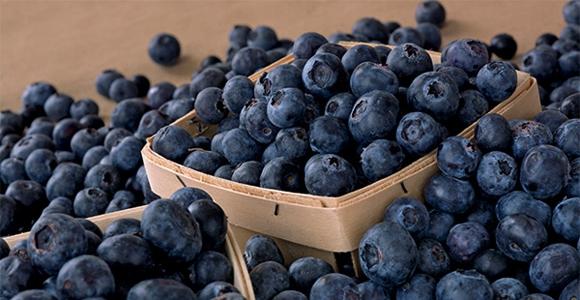Production of southern highbush blueberries in the southeastern United States for the early fresh market is relatively new and acreage is limited. Because southern highbush blueberry cultivars vary in adaptation, vigor, and longevity; and site requirements differ significantly from that …
Rabbiteye Blueberries
The rabbiteye blueberry (Vaccinium ashei) is native to the southeastern United States. Its native habitat ranges northward from central Florida to eastern North Carolina and westward to eastern Texas and southern Arkansas. The highbush blueberry (Vaccinium corymbosum) is native to …
Early Season Blueberry Varieties
Early season rabbiteye blueberry varieties selected for Mississippi include:
Austin: Rabbiteye Blueberry Variety — Plants are moderately vigorous, productive, and upright. Berries are large in size, blue in color, firm, have dry scars, good flavor, and good shelf life. Ripens …
Blueberry Varieties: Rabbiteye
Summit Blueberry Variety
- A mid- to late-season southern highbush cultivar.
- Fruit is firm with large and excellent color, flavor, and picking scar.
- Resistant to cracking, tearing, and stemming.
- Excellent performance in postharvest studies.
- Plant is semi-upright with medium vigor.
- Ozarkblue is a good
Dry Fertilization Table for Blueberries
Age of plant in field | Amount of Fertilizer per Plant per Application*
| 10-10-10 (Spring) | 14-8-8 (Spring) | Ammonium Sulfate (Summer) | Urea (Summer) | |
| 2nd year or 2′ tall | 2.0 oz. | 1.7 oz. | 1.2 oz. | .56 oz. |
| 3rd year or 3′ tall |
Blueberry Fertilization Table
| Age of Plant in Field | 10-10-10 (Spring) | 14-8-8 (Summer) | Am. Sulfate (Summer) | Urea (Summer) |
|---|---|---|---|---|
| 2nd Year or 2′ Tall | 2.0 oz. | 1.7 oz. | 1.2 oz. | .56 oz 2 or 3 times. |
| 3rd Year or 3′ Tall | 3.0 oz. | 2.6 oz. |
Blueberry Freeze Damage and Protection Measures
Soil pH for Blueberry Plantings
Blueberries require a lower pH than many other fruit and vegetable crops. Before planting blueberries, test the soil to determine the pH level, as well as amounts of nitrogen, phosphorus, potassium and organic matter present. More information can be found …
Fertigation
Fertilizer may be applied in liquid form through the irrigation system rather than surface applying dry granular material. This process is known as “fertigation.”
There are some advantages to fertigation, including:
- Fertilizer is more efficiently used.
- Fertilizer may be applied


